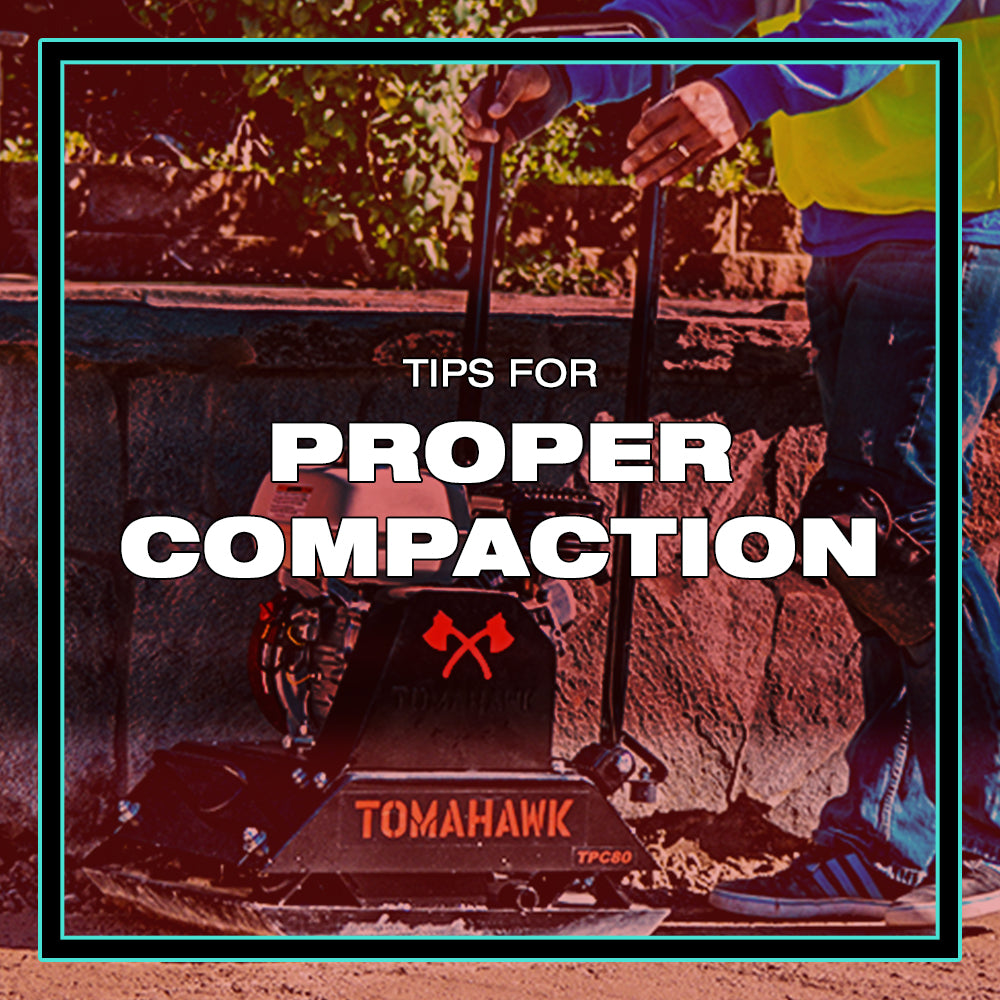When using a tamping rammer, jumping jack, or plate compactor at a jobsite it’s important to have a good understanding of the goals you want to achieve. Whether it be building a retaining wall, trench work, or repairing a sidewalk - soil compaction is necessary. Compaction of surfaces and foundation is essential as it is the main reason concrete or asphalt crack. Purchasing the proper rammer, vibratory plate, or roller is crucial as having the right tool for the job will make future work easier. Contact Tomahawk Power for guidance on uses and the proper compaction equipment.
When it comes to retaining walls it is necessary to use a rammer or heavy duty plate compactor in order to heavily compact these areas so that lose soils do not allow for a structure, such as a house, slide.
For roads and patchwork you might want to use a vibratory roller or plate compactor.
Finally, for building foundations, sidewalks, and trench work a tamping rammer or jumping jack is the best choice.
Here are the 3 Steps to Great Compaction
Soil Preparedness (AKA wetness of the soil)
Before compaction, make sure the dirt is ready to be compacted. You do not want soil that is “too wet” or “too dry” before compaction. To test this, grab a handful of dirt and squeeze it in your hand. It should not break apart. If it is in one piece after you squeeze the dirt in your hand, then the soil is ready for compaction.
Testing
The theory of testing soil is to measure the bulk density of an aggregate of matter and see if that density has increased by driving out air. For any soil, for any given amount of compaction effort, the density obtained depends on the moisture content. At a very high moisture content, the maximum dry density achieved is when nearly all the air is driven out. At a low moisture content level, soil particles interfere with each other. Additionally, some moisture will allow greater bulk densities, with a peak density where this effect begins to be counteracted by the saturation of the soil.
Testing constantly in various areas is important to ensure the quality of the job. Test strips are useful to determine which type of compactor and how many passes will be necessary to achieve the desired compaction.
The 2 most popular test are the Proctor Test and California Compaction Test 216
Operator & Engineer Teamwork
An experienced operator should always handle the compaction of soil, as it is usually the first and most important step to construction.
The number of passes needed to achieve the desired compaction depends on the lift thickness, contract, pressure, and soil moisture content.If we were to graph compaction this is what it would look like
No. of passes Depth to 90% compaction ratio
2 70%
4 85%
6 90%
Using the proper equipment such as a tamping rammer on clay would be ideal. Vibratory plates, such as the Tomahawk Power TPC90H Plate Compactor typically work best on rock fill. Tamping rammers and jumping jacks are useful for compacting soils in 2 to 3 lifts thick, at near-optimum moisture content, if trying to achieve 90% compaction. Choosing the proper equipment is just as important as the compaction and number of passes itself.
Please Contact Tomahawk Power for Advice on what to use how to compact!











